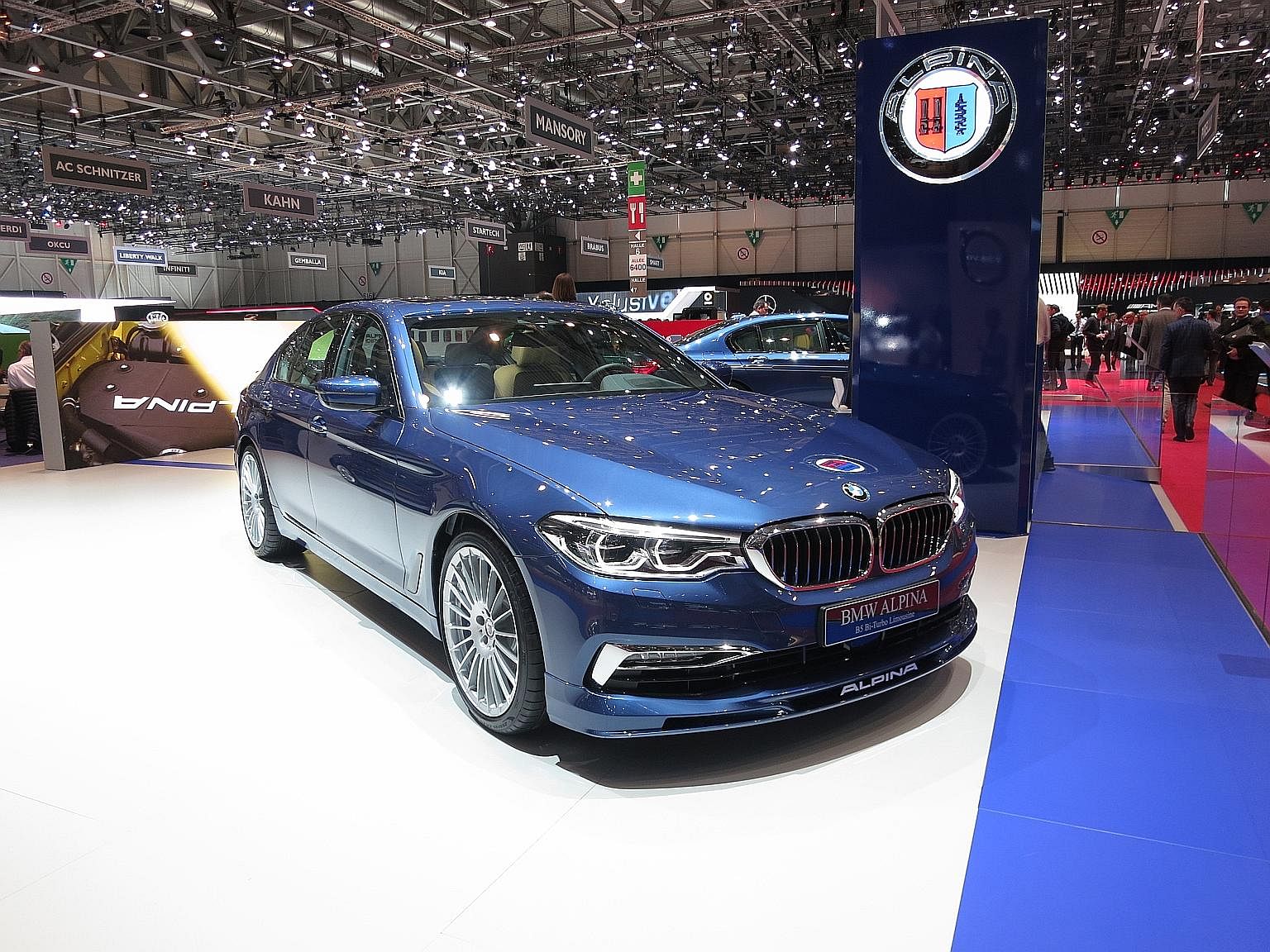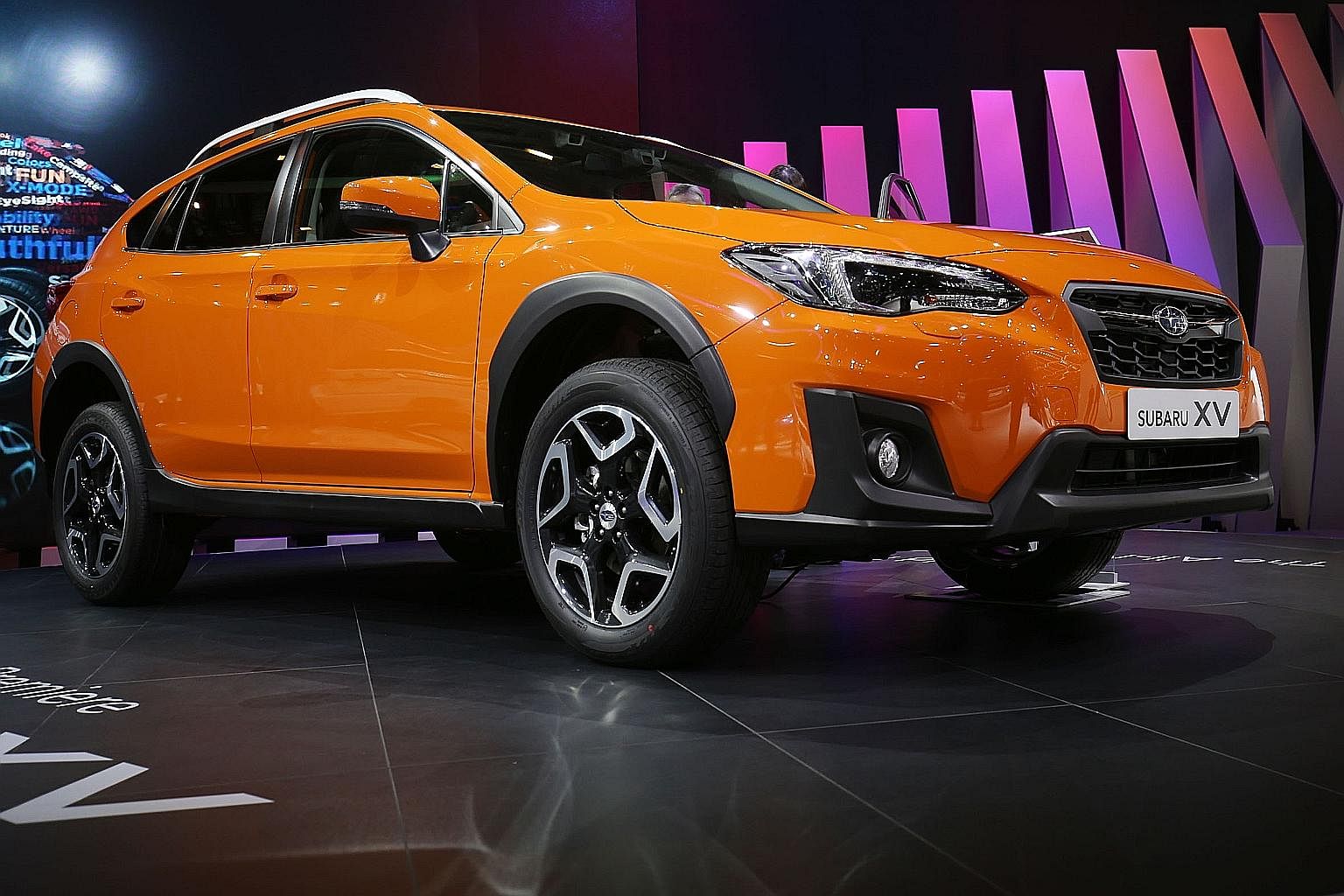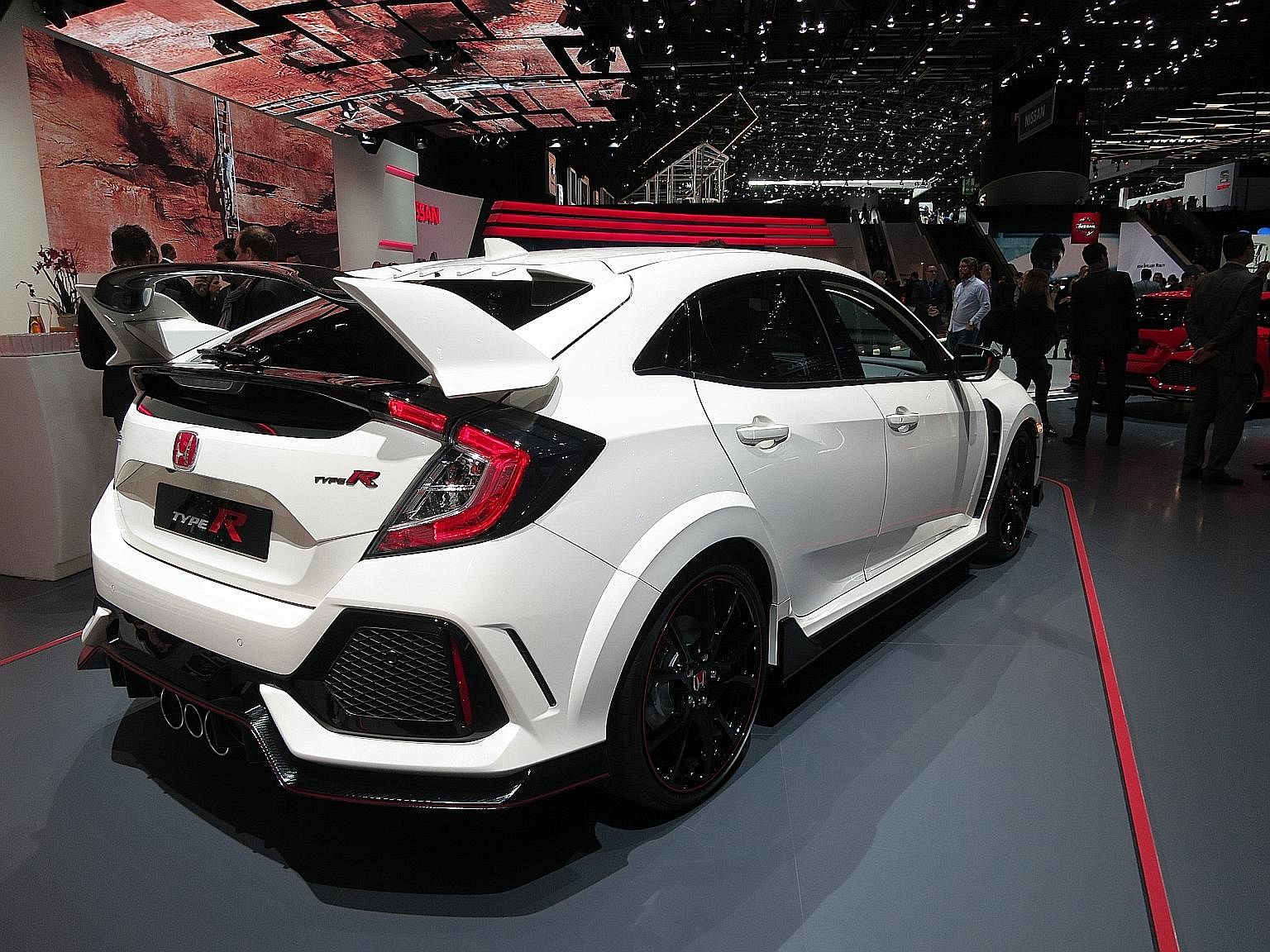Lamborghini Huracan Performante
Lamborghini calls it Aerodinamica Lamborghini Attiva (ALA) or active aerodynamics. This is the biggest reason why the Huracan Performante broke the production-car lap record previously held by the Porsche 918 Spyder at the Nurburgring-Nordschleife with a time of 6min 52.01sec.
ALA not only increases downforce to assist stability and speed while cornering, but also reduces aerodynamic resistance to help acceleration. This supercar does 0 to 100kmh in 2.9 seconds and hits a top speed of 325kmh. Having 640bhp and 600Nm helps too.

BMW Alpina B5 Biturbo
A tweaked version of BMW's 4.4-litre twin-turbo V8, with 608bhp and 800Nm on tap, gives the B5 supercar-rivalling performance. Zero to 100kmh takes just 3.5 seconds, while its top speed is 330kmh, making it the fastest accelerating model from BMW Alpina.
Helping to put all that power onto the asphalt are four-wheel-drive and bespoke ultra-high-performance tyres made specially for the car by Pirelli.
The B5 Biturbo is also the first Alpina model to employ active steering at the rear axle, which enables the rear wheels to turn up to 2.5 degrees, thus making it more agile when cornering.

Porsche 911 GT3
The new 911 GT3 will make many purists happy as Porsche has brought back the manual transmission, which had been omitted from its predecessor. Dr Michael Steiner, member of the executive board, research and development at Porsche, said that strong feedback received from Porsche owners and fans contributed to this.
Mated to a high-revving 4-litre flat-6 motor based on the one found in the 911 GT3 Cup racing car, the six-speed manual gearbox is likely to be a joy to use and makes the car the closest road-going relative today to a Porsche race car. With 500bhp and 460Nm on tap, 0 to 100kmh is achieved in 3.9 seconds if you can work the six-speed gearbox fast enough. A seven-speed PDK dual-clutch transmission is also available.
The car's chassis has been redesigned and features rear-axle steering. There are also dynamic engine mounts and a carbon-fibre rear wing. Inside the cockpit, the steering wheel comes from the 918 Spyder.

Nissan Qashqai
Nissan focused on its latest intelligent mobility technologies when developing the updated Qashqai. For the first time, its proprietary ProPilot autonomous drive capability will be made available for the crossover.
The advanced feature controls the steering and regulates both the acceleration and braking in a single lane on highways, and should be useful in heavy traffic or during high-speed cruising.
Also new to the Qashqai are seats with soft Nappa leather, 3D quilting on the centre panels and a flat-bottomed multi-function steering wheel with satin- chrome inserts.

Subaru XV
Built on Subaru's new global platform, the second-generation XV crossover sports significantly enhanced body and chassis rigidity. The result is improved ride comfort and reduced vibrations, as well as better body control when cornering.
All XV variants are propelled by a newly developed 2-litre boxer four-cylinder engine with 156bhp, 196Nm and standard all-wheel-drive (AWD). The AWD is equipped with X-Mode, which further enhances the XV's off-road ability by simultaneously adjusting the engine, drive system and brakes to provide additional control when the tyres lose traction on slippery surfaces.

Volvo XC60
The exterior of the new XC60 looks like the larger XC90 as both SUVs share Volvo's Scalable Product Architecture. However, the smaller model is blessed with a lower stance and curvier lines.
The XC60's four-cylinder powertrain options mirror those of the XC90 - a turbocharged 2-litre, a turbocharged and supercharged 2-litre called T6, and a top-of-the-line plug-in hybrid 2-litre T8.
Occupants will be greeted by a sumptuously Scandinavian interior design, with the highlights being the vertically oriented Sensus infotainment system, the climate-control air vents which sport a similar elongated look and a crystal rotating shifter between the front seats, flanked by gorgeous open-pore wood trim.

Honda Civic Type R
Looking very much like a fighter jet with four wheels, the new Civic Type R is packed with an arsenal of "weapons" to ensure that it is ready for any kind of performance battle.
These include the turbocharged 2-litre four-cylinder VTEC powerplant with 320bhp and peak torque of 400Nm, and the six-speed manual gearbox with rev match control system.
Also helping the Civic Type R to be a blisteringly fast drive on the road is an aerodynamic package that includes a smoother underbody, front air curtain, a lightweight rear wing and vortex generators at the roof line.
For normal driving, a new "Comfort" setting can be selected to ease throttle response, gearshift feel and steering feedback.

Audi RS5 Coupe
Two features headline the latest RS5 Coupe: its 2.9-litre V6 twin-turbo engine and the design formula of its exterior, which will apply to future Audi Sport models.
The new RS5 produces 450bhp and 600Nm - 170Nm more than the previous model. Lighter by 60kg and with quattro all-wheel-drive and wheel-selective torque control, the new two-door shares the mantle of "fastest Audi road car" with the larger RS6 Avant.
In the 0-to-100kmh dash, both cars clock 3.9 seconds, more than half-a-second quicker than the previous RS5 Coupe. Options include a carbon-fibre roof and RS-specific items such as sport suspension, sport exhaust and dynamic steering.

